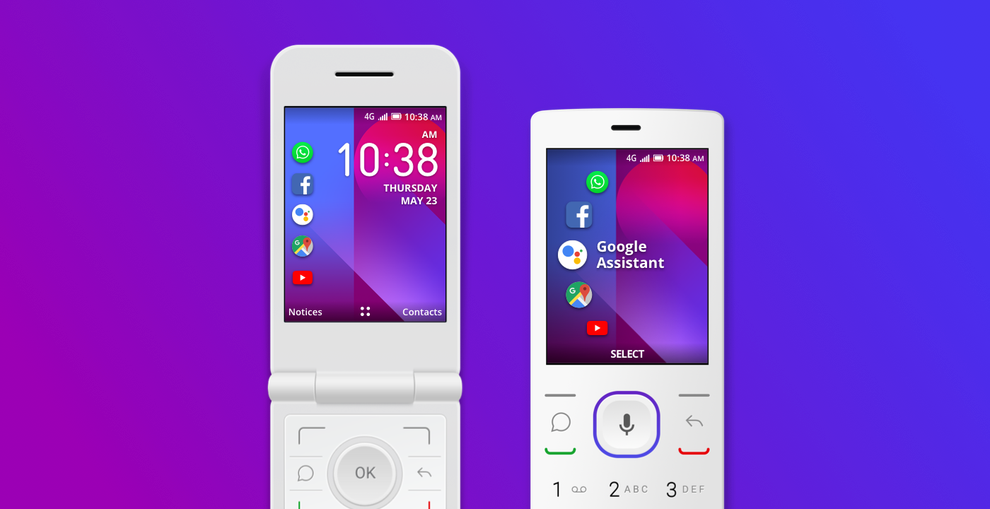Smartphones have revolutionized the way we communicate, work, travel and live. There is barely anything in our lives that has not been touched by the emergence of these smart devices. From the viewpoint of a person living in Western Europe, smartphone technology and apps have become ubiquitous.
But what about people in countries where the average wage does not provide enough money to afford such an expensive communication tool?
In 2019 more than 5 billion people owned a mobile device of which over half were smartphones (Silver, 2019). While a median of 76% across 16 developed countries owns a smartphone, this number is way lower in developing countries where a median of 45% call a smartphone their own (Silver, 2019). While populations, particularly in developing countries, are getting more and more access to smartphones, there is still a great imbalance between a developed country such as South Korea where 95% of the population owns a smartphone and India where only 25% of its citizen own a smartphone (Silver, 2019).
KaiOS, a new operating system (OS) is about to change all this. In 2019 KaiOS phone shipments have surged by 65% making KaiOS the third-largest mobile device operating system worldwide (Huang, 2019).
But what is KaiOS and what makes it so successful in the last years?
KaiOS was born after Firefox OS (an open-source operating system developed by Mozilla) was discontinued in 2016. KaiOS used the open-source characteristics of the failed Firefox’ operating system to launch its own version targeted at feature phones (Lunden, 2018). KaiOS saw that Android and iOS had created a de facto duopoly for smartphone OS around the world which was almost impossible to break due to strong network externalities. While the market for smartphone operating systems was saturated, the feature phone market still had no dominant OS mainly due to the lack of functionalities these phones can offer. By developing an OS that targets these low-end feature phones KaiOS wants to “close the digital divide in societies around the world” (KaiOS, 2019) by creating software that brings smart functionalities to low-end feature phones. In 2019 KaiOS users can use WhatsApp, Google Maps and Google Assistant (and several other features) on their feature phones.
Now you might be thinking: Why is this a big deal? I have had WhatsApp and Google Maps for 7 years on my phone already?
Here is why: KaiOS is technically enabling affordable feature phones that sometimes cost less than 20€ to become smart and access the internet. The market for these phones especially in the developing world is tremendous. KaiOS claims that there are currently more than 3 billion people that have no access to the internet (KaiOs, 2019) which indicates that there is enough room for a new OS that can create its own ecosystem. The plan seems to pay off big time:
In 2019 KaiOS received an investment of $50 million with $22 million coming from competitor Google (Lunden, 2019) indicating that Google acknowledges the potential of KaiOS being a real long-term competitor to its own Android OS.
I am intrigued by the emergence of smart Technology becoming accessible to everyone around the world! What is your opinion on KaiOS’ quest to bring smartphones to the poor? Please let me know in the comments!
Bibliography
Huang, A. (2019). KaiOS phone shipments to surge 65% in 2019, says Digitimes Research. [online] DIGITIMES. Available at: https://www.digitimes.com/news/a20190919PD205.html [Accessed 16 Oct. 2019].
KaiOS (2019). Who is KaiOS- A Powerful Operating System. [online] Kaiostech.com. Available at: https://www.kaiostech.com/who-we-are/ [Accessed 16 Oct. 2019].
Lunden, I. (2018). KaiOS, a feature phone platform built on the ashes of Firefox OS, adds Facebook, Twitter and Google apps – TechCrunch. [online] TechCrunch. Available at: https://techcrunch.com/2018/02/26/kaios-a-feature-phone-platform-built-on-the-ashes-of-firefox-os-adds-facebook-twitter-and-google-apps/ [Accessed 16 Oct. 2019].
Lunden, I. (2019). KaiOS raises $50M, hits 100M handsets powered by its feature phone OS – TechCrunch. [online] TechCrunch. Available at: https://techcrunch.com/2019/05/22/kaios-raises-50m-more-hits-100m-handsets-powered-by-its-feature-phone-os/ [Accessed 16 Oct. 2019].
Silver, L. (2019). Smartphone Ownership Is Growing Rapidly Around the World, but Not Always Equally. [online] Pew Research Center’s Global Attitudes Project. Available at: https://www.pewresearch.org/global/2019/02/05/smartphone-ownership-is-growing-rapidly-around-the-world-but-not-always-equally/ [Accessed 13 Oct. 2019].
Picture:
TechCrunch (2019). [image] Available at: https://techcrunch.com/2019/05/22/kaios-raises-50m-more-hits-100m-handsets-powered-by-its-feature-phone-os/ [Accessed


Great blog post Thorsten! I think KaiOS can really impact people’s lives that previously had limited access to the internet. Also the potential for growth is massive, especially after you pointed out that they have began to get quite good traction in 2019. However, I do see a two problems with KaiOS and I would be curious to see what you think:
1. Samsung utilises Android OS and has a significant market share lead in emerging countries over phones that use KaiOS. Since this advantage is considerable (33.4% market share in Africa) and Samsung offers some smartphone models for similar prices than KaiOS phones, do you think that KaiOS can compete or will it be driven out of the market by Samsung? Additionally, Samsung may be able to further reduce prices due to economies of scale if they notice signs of disruption from KaiOS phones.
2. Mobile data is expensive for people in emerging markets where KaiOS operates in. In Africa, mobile data represents on average 8.7% of income. Also, data plans are mostly pre-paid causing people to use data very sparingly. Additionally, most Africans have two sim cards due to variable infrastructure quality, further driving up individual’s data plans. Therefore, will there actually be use for KaiOS if people cannot afford to use key features like Google Maps or Google Assistant?
Sources:
https://gs.statcounter.com/vendor-market-share/mobile/africa
https://www.theafricareport.com/14567/three-reasons-why-african-mobile-connectivity-is-misleading/